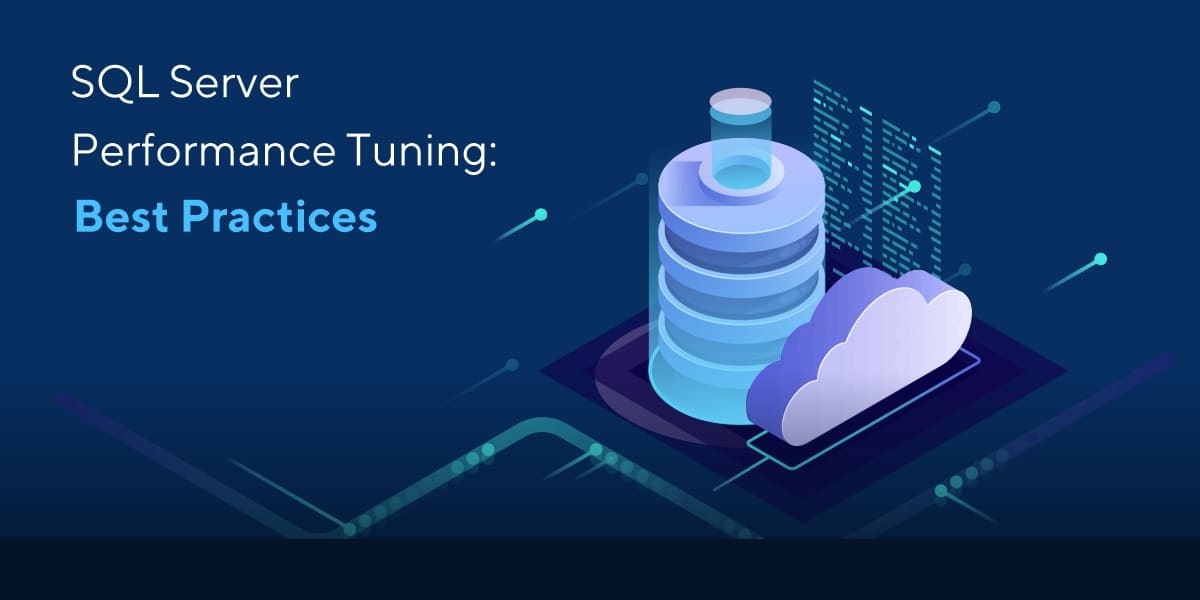Are you struggling with slow SQL queries and database performance bottlenecks?
Fear not! In this blog post, we’ll discuss SQL performance tuning, share tips and best practices, and help you optimize your database for maximum efficiency.
Packed with actionable advice and real-world examples, this post is your one-stop resource for all things SQL tuning. So, let’s get started!
Table of Contents
- Optimize Your Query Structure
- Leverage Indexes
- Optimize Database Design
- Use Query Optimization Hints
- Analyze and Monitor Query Performance
- Use Database Caching
- Optimize Hardware and Server Configuration
- Regularly Update and Maintain Your Database
- Final Thoughts
Optimize Your Query Structure
Understanding and optimizing query structure is crucial for SQL performance tuning. Keep these tips in mind while crafting your queries:
- Use SELECT statements judiciously: Avoid using SELECT * unless absolutely necessary. Instead, specify the exact columns you need to retrieve, as this will reduce the data transfer between the database and the application.
Example:
Bad: SELECT * FROM employees;
Good: SELECT first_name, last_name, hire_date FROM employees;
- Use JOINs wisely: Avoid using too many JOINs, and be mindful of the types of JOINs you use. INNER JOINs usually perform better than OUTER JOINs.
- Limit your query result set: Use the LIMIT or TOP clause to retrieve a specific number of records, reducing the overhead of fetching large datasets.
Leverage Indexes
Indexes can significantly improve query performance by allowing the database to quickly locate rows based on specific column values. Here are some indexing best practices:
- Create indexes on frequently searched columns: Identify the columns that are most often used in WHERE clauses and create indexes on them.
Example:
CREATE INDEX idx_employees_last_name_first_name ON employees(last_name, first_name);- Avoid over-indexing: Too many indexes can slow down INSERT, UPDATE, and DELETE operations. Strike a balance between read and write performance by carefully selecting the indexes your application needs.
Optimize Database Design
A well-designed database schema can significantly improve SQL performance:
- Normalize your data: Normalize your database schema to eliminate data redundancy and ensure data integrity. However, be cautious about over-normalization, as it can lead to excessive JOIN operations.
- Use appropriate data types: Choose the right data types for your columns to minimize storage space and improve query efficiency.
- Optimize table structure: Use partitioning and clustering to improve the performance of large tables.
Use Query Optimization Hints
Some databases, like SQL Server and Oracle, allow you to provide query hints to the query optimizer. These hints can help the optimizer make better decisions when executing your queries:
Example (SQL Server):
SELECT first_name, last_name FROM employees WITH (INDEX(idx_employees_last_name)) WHERE last_name = 'Smith';Example (Oracle):
SELECT /*+ INDEX(employees idx_employees_last_name) */ first_name, last_name FROM employees WHERE last_name = 'Smith';However, be cautious when using query hints, as they can make your code less maintainable and may cause issues if the underlying data or schema changes.
Analyze and Monitor Query Performance
Regularly analyzing and monitoring your queries can help you identify performance bottlenecks and opportunities for optimization:
- Use EXPLAIN PLAN: Most databases provide an EXPLAIN PLAN feature to show how the query optimizer plans to execute a query. Use this information to identify inefficient query plans and optimize your SQL.
Example (PostgreSQL):
EXPLAIN SELECT first_name, last_name FROM employees WHERE last_name = 'Smith';- Monitor slow queries: Keep an eye on slow queries using database-specific monitoring tools like SQL Server Profiler, Oracle Enterprise Manager, or MySQL Performance Schema.
- Optimize regularly: Regularly review and optimize your queries, schema, and indexes to ensure peak performance.
Use Database Caching
Database caching can significantly improve the performance of frequently executed queries:
- Use query caching: Many databases offer query caching features that store the results of frequently executed queries in memory. Enable query caching to speed up repeated query execution.
- Implement application-level caching: Cache query results at the application level using caching solutions like Redis or Memcached. This can help offload some of the work from the database and improve overall performance.
Optimize Hardware and Server Configuration
Improving the hardware and server configuration can also boost your SQL performance:
- Upgrade hardware: Consider upgrading to faster disks, adding more RAM, or using solid-state drives (SSDs) to improve database performance.
- Optimize server settings: Review and adjust database server configuration settings, such as buffer pool size, cache size, and query optimizer settings, to optimize performance.
- Distribute workload: Use load balancing and replication to distribute database workload across multiple servers, improving overall performance and availability.
Regularly Update and Maintain Your Database
Routine database maintenance is essential for ensuring optimal SQL performance:
- Update database statistics: Regularly update database statistics to help the query optimizer make informed decisions when planning query execution.
- Reorganize and rebuild indexes: Over time, indexes can become fragmented and less efficient. Regularly reorganize and rebuild indexes to maintain their performance.
- Perform routine backups and database integrity checks: Regularly back up your database and run integrity checks to ensure data consistency and protect against data corruption.
Final Thoughts
Achieving optimal SQL performance requires a combination of query optimization, indexing, database design, monitoring, caching, hardware upgrades, and regular maintenance.
By following these best practices and tips, you can significantly improve the performance of your SQL queries.
Thank you for reading our blog, we hope you found the information provided helpful and informative. We invite you to follow and share this blog with your colleagues and friends if you found it useful.
Share your thoughts and ideas in the comments below. To get in touch with us, please send an email to dataspaceconsulting@gmail.com or contactus@dataspacein.com.
You can also visit our website – DataspaceAI



